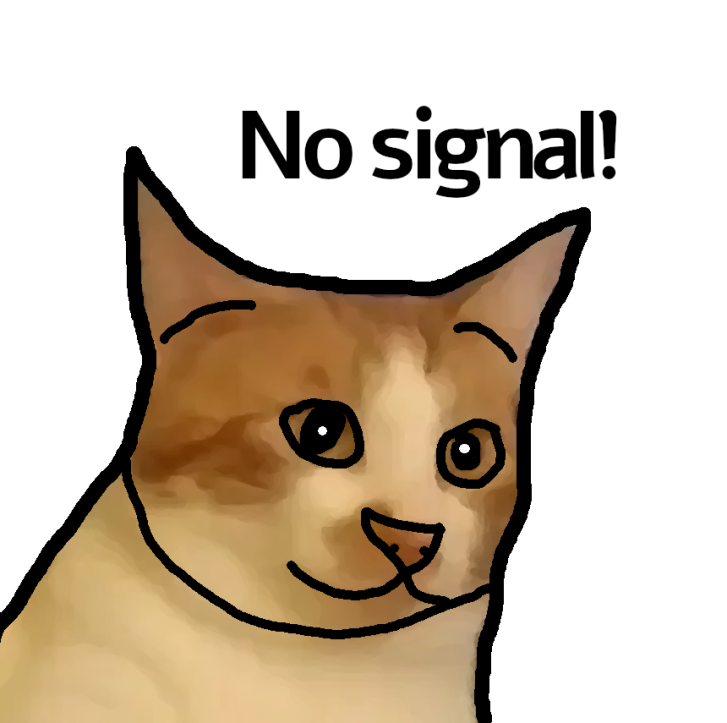DnD Players & Christians can bond over buying a book and then willfully misinterpreting it for their own benefit.
“It says here that your class cannot wield that weapon type”
“It’s not supposed to be interpreted literally!”
Ugh what was it….? I had a player saying he should be getting 4D8 hit dice HP at lvl 4 after we’d already gone through 1-3 properly, then reading the rule saying you get one hit die per level.
“Per level! That’s level 4 so I get 4!”
He would not give it up so I was like, “I guess it could be interpreted that way if you were trying really hard to gain an advantage, but earlier in the book it says DM has the final say and I say it’s one.”
RaW vs RaI: Heresy Edition
Ha, the Bible is free with every hotel rental.
Dictionary.
I had a welding teacher that was always saying that he had read the dictionary twice. It felt like he was saying that as a way to show how he had a superior intelligence or something. It was pretty funny.
Elon Musk claimed to have read an entire encyclopedia as a kid for the same reason
Yeah but lying doesn’t count.
That’s what I’m saying, he lied to sound intelligent just like the teacher
I mean I actually did but it just meant I had no friends and I wasn’t allowed to watch TV. Also human knowledge was pretty basic then and each entry was pretty modest and outliney.
I think it would’ve been a lot better if I had run around outside or watched power Rangers
Read it multiple times as a kid, Granted it was a punishment from a teacher but still
To be fair, many guides and handbooks and other books of that nature are more meant to be referenced as opposed to read back to front.
The forgotten realms campaign setting book for 3.5e reads more like a novel than a rulebook. It’s pretty dope. Just so much detail about the gods, the countries, even touches on some extra-planar stuff.
omg, look at you here as well, I’m gonna pop out on every comment of yours I come across
They’re really really prolific. Great comments too!
I read the 2e FR campaign book. I found it to be a slog. :(
When I first picked up the Nobilis RPG, I read it cover-to-cover, the margins were always crammed full of stories and examples that really helped develop the setting and ideas and contextualize everything. I think the majority of RPGs that I’ve picked up have been read back to front… because what else are you going to do on your first pass?
I’ll definitely agree that it’s good to have books that work as decent reference manuals, especially for rules heavy games… but… have you tried to use the indexes in the 5e books - the PHB index is an experience and a half.
I’m not saying they can’t be read front to back just that it’s not necessarily strange for someone to not fully read a guide/manual/handbook.
I think the idea of the initial post is that, when presenting someone with a “guide” for running a game, you kind of expect someone to have read the whole thing at least once, and then use it for reference.
With the case of the 5e DMG, it actually has quite a lot of good advice in it, but most people running games haven’t read it fully… You constantly see complaints about 5e saying “there’s no advice for (x)” where the advice is just in the DMG
I can definitely see someone who has played DnD before as a player to not read the manual completely. It’s what I did. I skipped some parts towards the end and some at the beginning when planning my first campaign.
I do think that the 4e DMG had a lot of practical DMing “advice” that got dropped for the 5e one sadly. Stuff about how to tell a fun story and organize a full campaign.
I raise you the player handbook.
Oxford dictionary?
LOTR? (I know plenty of you fucks have been telling yourselves you’ll read but “haven’t gotten around to it”) /j
Literally me.
Which one is the best in your opinion, I’m thinking of buying the master one as inspiration for a video game, the 5 or the 2.5?
Are you asking which edition is the best one? You’ll probably get some heated responses (and I’m gonna get some too for my recommendation) but I think 5e is the best one to adapt to a videogame. The system is pretty “dumbed down” for lack of a better term than what I’ve seen of other systems.
Disclaimer, I’m a brand new DM and only have in-game experience with 5e, but I’ve tried looking through some older editions, and maybe Baldurs Gate is to blame but none of them really made much sense to me.
Imo 4e is far and away the most analogous edition to a video game and it’s not close. That’s why a lot of longtime dnd players found the shift so jarring. It forewent a lot of the more RP and theater-of-the-mind focused parts of combat in particular and integrated systems that were inspired by tabletop war and tactics games. From a pure mechanics perspective, it was awesome and there was a lot to grab on to and really strategize/min-max. Some people didn’t like the trade-offs though. I think it is the most video game like in its core systems.
Pathfinder 2e has a lot of 4e DNA in it, and I routinely see people treating significant swaths of it as if it’s a video game. Which, as a PF2e GM and player, is bizarre to me. People talk about playing it as if they’re just exposing the mechanics to the air.
But if I was going to make a video game, 4e/PF2e are absolutely what I’d base the mechanics around. They’re pretty tight systems, mechanically.
Pf is my vote. Love it.
I’ll have to look into 4e then, I’ve only really tried looking at 5e, 3.5e, and 2e (whatever that was called). Honestly now that I’m thinking about it I don’t know that I’ve heard people ever talk about 4e. Sounds interesting, though.
Yeah it’s a bit of red-headed step child. There’s some pretty cool mechanical stuff in there though.
I’ve played and DMed all but 4E, and 5E is easily the most accessible version I’ve played. I agree, though; 5E with some tweaks works very well as a video game. 3.5E, as much as I love it, can get incredibly complex very quickly. AD&D is, putting it kindly, a shitshow. The system is needlessly complex and convoluted.
Thank you! I actually thought the 5(e?) would be more complicated(and on a side note, the 2.5 more like). So thanks for simplify that for me!
No problem. Like I said, there are probably a lot of people that would disagree with me, but 5e seems to make the most logical sense to me. Once you understand the very core concepts, you can more or less figure everything out from there. There’s a lot of niche rules, but if you are just making your own game based on 5e, you can decide what you like and don’t like.
Oh hey, I want to message you again in case you did not know. Most, if not all, of the DnD handbooks can be found very easily for free online. The physical books, if bought new, are very expensive, especially if you are not interested in actually playing the game. But all of the rules and information you need, you can search and find very easy.
Yes smart move! I’ll check out the 2, 5 and the 3 :-)
Nice! When you check them out, don’t be intimidated by the lengths of the books. I don’t know what other edition books look like, but the 5e player handbook is SUPER long, but most of the book is covering things like class abilities and spells. The actual rules of the game is a very short section at the beginning and middle of the book.
Thanks for the encouraging words, I’ll dig in soon :-)
When you say 2.5, do you mean 3.5? 3.5 was an actual edition, still widely played (what I started on, even though 5e existed at the time). I’ve heard some people refer to late 2nd edition (I think particularly after the combat and tactics optional material) as 2.5e, but only in a very informal sense as an acknowledgment of how much one of those later supplements changed the game. Second edition is a hard sell for a modern audience, as you have to think about THAC0, to-hit tables, weird saves vs specific things, etc. It’s what Baldur’s Gate 1 and 2 run on.
3.5 is much more intuitive than second edition in terms of its core mechanics, but had a huge amount of supplementary material released for it. It’s still a detailed and crunchy system, and usually if you hear people talking about crazy character builds where they figured out how to become omnipotent at level 5 or used metamagic to wipe out a 200 mile radius with a level 4 spell, they’re probably talking about 3.5. It’s also what pathfinder is based on - you can basically play pathfinder 1 and d&d 3.5 if you’ve learned to play one of them, they’re not identical but they’re closer than any actual editions.
5 is much less crunchy than 3.5 or 2, and easier to learn, while still having good systems in place. I’ve heard it referred to as “everyone’s second favorite system”, on the basis that it’s so well-rounded (of course, in practice it’s plenty of people’s favorite or only system). I think it leans a bit more on dungeon master (referee) interpretation/judgment, which might make it less viable for a video game, but clearly Baldur’s Gate 3 works just fine using it. I’ve been curious since BG3 was announced how they went about fully mechanising parts of it, but haven’t yet gotten around to checking it out.
If you’re new to tabletop RPGs and just looking for inspiration and only looking at one system, 5 is probably your best bet - and if you run into part of it and wonder how this could translate to a computer context, you can always check what BG3 did for reference.
Actually, now that I’ve said that though, 4e is worth mentioning too. It’s usually not in the discussion for most tabletop group discussions, because of how video gamey it is, but a) that works in your favor here, and b) it does introduce some good stealable ideas, in addition to the video-gamey combat overhaul. Notably skill challenges and minion-type enemies. Another comment already gave a good discussion of 4e though, I just wanted to acknowledge that it’s a decent contender in spite of what I said about 5e being your best bet. The only reason it’s an afterthought is that it’s sort of the black sheep of the d&d family for tabletop purposes.
Edit: you know what, just since I ended up addressing every mainline numbered edition except 1, I’ll give a quick note on that. It’s basically 2 but worse. The change from 1st to 2nd was a much smaller change than all the other ones, so people basically treat them as the same thing. But 2nd edition is the finished one. It’s a bit more complicated than that and there’s a few other versions from around that time, plus modern attempts to replicate the feel of that time, but I feel like for your purposes nothing before 3.5 is likely to be worth thinking too hard about.
I’m open to follow-up questions if any part of this rambling comment needs elaboration or clarification. I intended to just clarify the 2.5 vs 3.5 thing but it kind of got away from me.
Okay so, 2, 3, 4 or 5, but not 1.
😁
Seriously though, thank you! I’ll check out the 5 (apparently there are easy to find pdf around) and maybe the 3 and 4 if that doesnt tick.
If you want the best rules to base a videogame on, I’d probably recommend you look at 4th edition.
4th edition rules are, largely, designed around running a systematic, balanced, combat simulation - most of the rules are deterministic and leave little ambiguity, or room for interpretation.
Most other editions of DnD have… more freeform rules, in places they read as guidelines for running a game, or they are ambiguous, or leave it up to the DM to decide how to run that particular thing. They’re more conducive to roleplay but much less useful if you’re trying to adapt them for a computer to run.
Thanks!
Now I have to check out the 4e too 🥲😁













